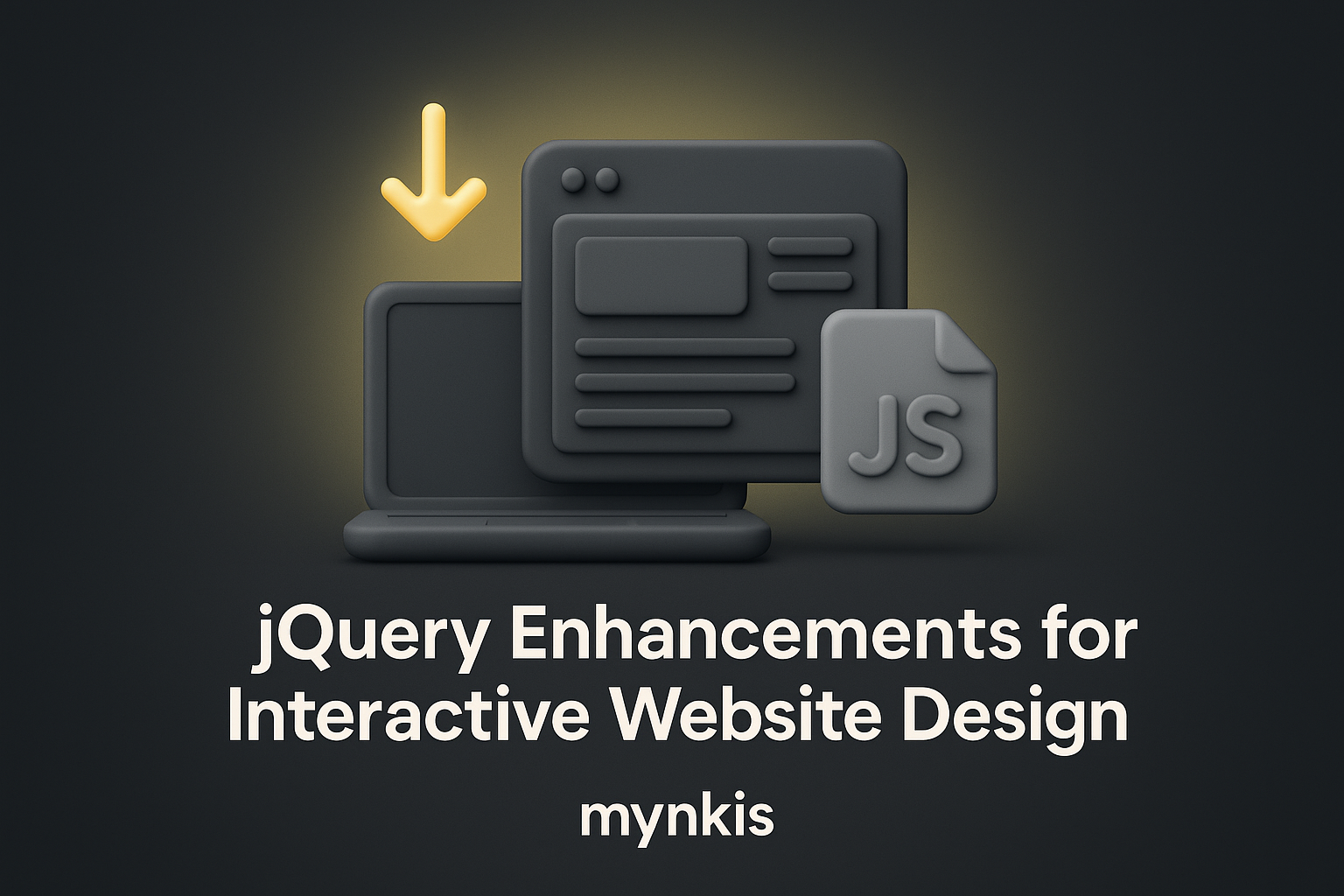Schedule a Demo
In the world of web development, jQuery remains a powerful ally for creating dynamic and interactive user experiences. As a founder looking to scale your tech infrastructure, understanding how jQuery can enhance your MVP website is crucial. jQuery simplifies complex JavaScript functionalities, allowing you to integrate animations, real-time data updates, and seamless user interactions without diving into the depths of vanilla JavaScript.
When you're building an MVP (Minimum Viable Product), every second and every line of code counts. jQuery's ease of use allows even non-expert developers to implement sophisticated features quickly. Whether it's slide-down menus or dynamic content loading, jQuery's extensive library of plugins and effects can be a game-changer for rapid iteration.
Engagement is key, and dynamic content is one of the best tools for holding your audience's attention. Using jQuery, you can effortlessly update website elements without reloading the entire page. This technique is particularly useful for creating live feeds, updating user statistics, or implementing real-time customer support features.
Navigation is the backbone of any website. jQuery helps enhance your site's user interface and experience by making navigation smoother and more intuitive. Think about dropdown menus that appear on hover, or tabs that switch content seamlessly. These enhancements not only make your site more attractive but also easier to use.
In my work with numerous startups, I've seen how customized animations can dramatically boost user engagement. jQuery provides an accessible way to animate elements on your site—from fading in new content to moving elements around the page. These animations not only look great but also provide immediate feedback to the user, something especially important for guiding them through new functionalities in an MVP.
While jQuery can create stunning user experiences, it's vital to consider its impact on SEO. jQuery-dependent elements that rely on user interaction might not be visible to search engine crawlers. To mitigate this, ensure that critical content is available without JavaScript, or use progressive enhancement to improve SEO while retaining interactivity.
As your business grows, so does the load on your website. Ensuring that your jQuery-enhanced site can handle increased traffic without slowing down is essential. Techniques like minimizing DOM manipulation, using efficient selectors, and deferring non-critical scripts can make a huge difference in performance and scalability.
JQuery might not be the trendiest tool in the modern web developer's kit, but it integrates well with contemporary frameworks like React and Angular. For founders aiming for a blend of established reliability and cutting-edge technology, jQuery's compatibility allows for a smooth transition and integration into larger, future-proof projects.
One of the risks of using any technology in web development is obsolescence. Yet, jQuery remains popular due to its vibrant community and wide range of plugins. By combining jQuery's wide functionalities with a thoughtful approach to design, you're setting up your MVP for not just immediate use but also for future expansions.
JQuery's strength lies in its ecosystem of plugins. Need to create an image slider or a responsive layout? There's a plugin for that. By leveraging pre-existing plugins, you can expedite your development cycle, get to market faster, and provide a richer user experience from the get-go.
Security is a non-negotiable aspect of any web application, especially when you're handling user data. jQuery scripts can be vulnerable to attacks like XSS (Cross-Site Scripting) if not used carefully. Always keep your jQuery library and plugins up to date, sanitize user inputs, and use secure protocols for all your data transfers.
From established tech giants to nimble startups, countless businesses have leveraged jQuery for their web solutions. For instance, companies like Airbnb initially used jQuery to build interactive elements of their platform before migrating to more modern stacks. The lesson? jQuery is an excellent stepping stone, allowing founders to create compelling user experiences while planning for scalable, long-term tech infrastructure.
Not all solutions are created equal, and while jQuery excels in many areas, it's beneficial to understand when other technologies might serve you better. For complex applications, you might consider integrating with frameworks like Vue.js for more comprehensive client-side rendering. The key is to find the right tool for the job and not be afraid to pivot or combine technologies as your needs evolve.
Ultimately, the goal of using jQuery—or any web development tool—is to enhance your user's experience. From slide-out contact forms to animated progress bars, every interactive element should serve a purpose, be it guiding the user or simply delighting them. When deployed thoughtfully, these features can increase dwell time, reduce bounce rates, and ultimately improve conversion rates.
JQuery allows for dynamic changes based on user behavior, tailoring experiences that evolve with each interaction. Using event listeners, you can detect user actions and adjust the site's responses accordingly. This level of personalization not only creates a more engaging user experience but also provides valuable insights into user preferences and behaviors.
